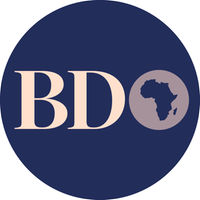
Commercial banks reported higher bad loans from corporate clients during the course of the pandemic, debunking the perception that SMEs were riskier borrowers, according to a new report.
Summary
- Commercial banks reported higher bad loans from corporate clients during the course of the pandemic, debunking the perception that SMEs were riskier borrowers, according to a new report.
- In the 2021 Economic and Investment Landscape brief, ICEA Lion Group has said the revelation offers an opportunity for banks to increase their lending appetite to SMEs.
In the 2021 Economic and Investment Landscape brief, ICEA Lion Group has said the revelation offers an opportunity for banks to increase their lending appetite to SMEs.
“Banks have been starved of credit opportunities for almost five years now as a result of the rate cap and the pandemic. During the course of the pandemic, some banks have reported higher NPLs from their corporate customers compared to SMEs,” ICEA Lion stated.
“Consequently, the pandemic offers banks the opportunity to increase their lending appetite for SMEs, by availing working capital facilities for them to get back on their feet, grow and help in resuscitating the economy.”
For close to four years, the SMEs had a higher risk rating that was attributed to the interest rate cap that was scrapped in November 2019.
The repeal was followed by an economic crisis from pandemic restrictions that has seen banks continue to shy away from lending to the sector.
Central Bank of Kenya data show the non-performing loans (NPLs) rose to Sh403.9 billion in October, up from Sh349.9 billion at the end February, the sharpest eighth-month increase in recent history, This represented 13.6 percent of the total loan book.
The NPL increases were noted in the transport and communication, energy and water, tourism, restaurant and hotels and real estate sectors, mainly due to the disruption of businesses.
The increases in NPLs were partially offset by repayments and recoveries in the trade, manufacturing and building and construction sectors.
MSMEs are concentrated in three main sectors- wholesale and retail (60 percent), manufacturing (11.6 percent), and accommodation and food services sector at nine percent.
Private sector credit growth touched a high of 25.8 percent in June 2014, but dropped to 4.29 percent average during the interest rate regime.





No comments :
Post a Comment